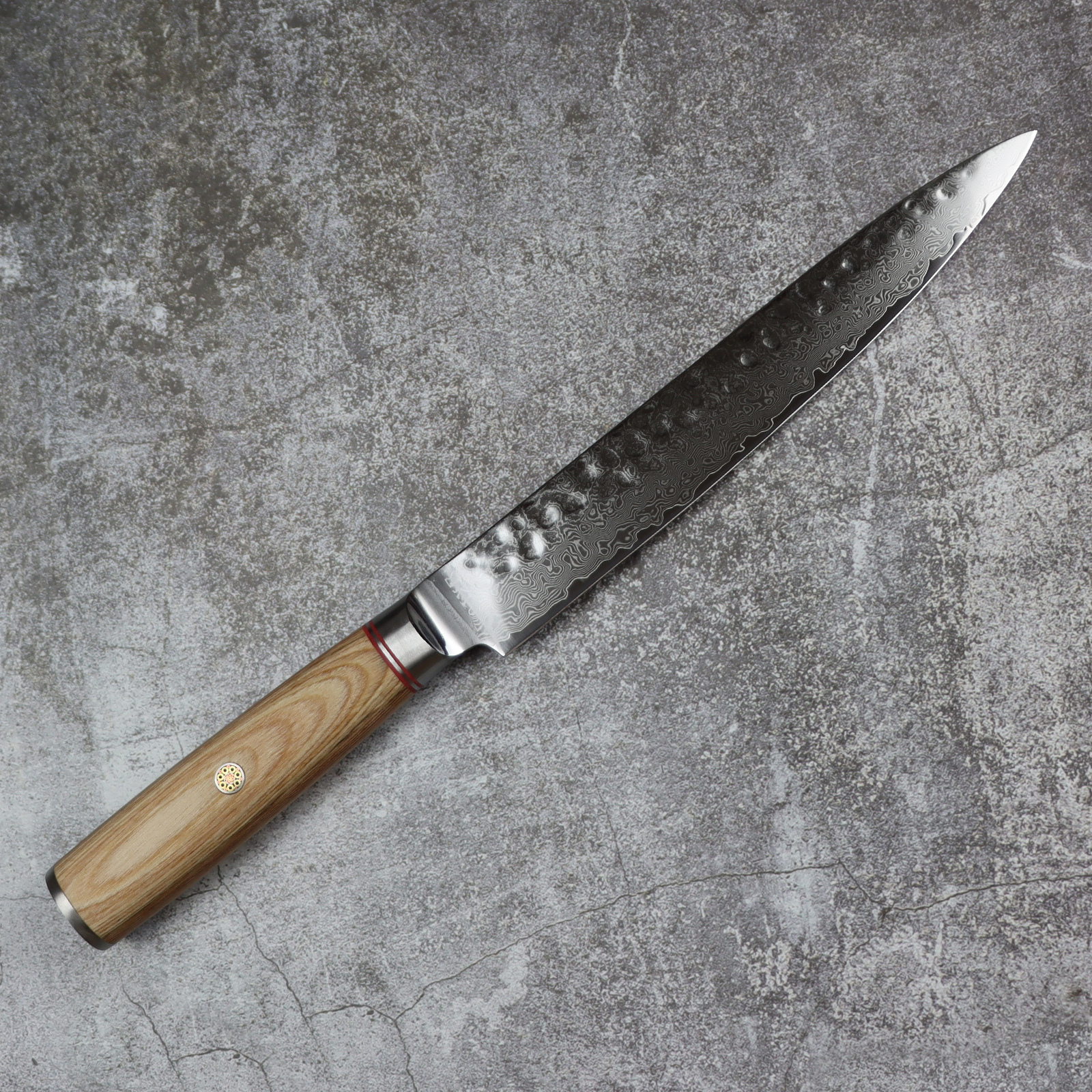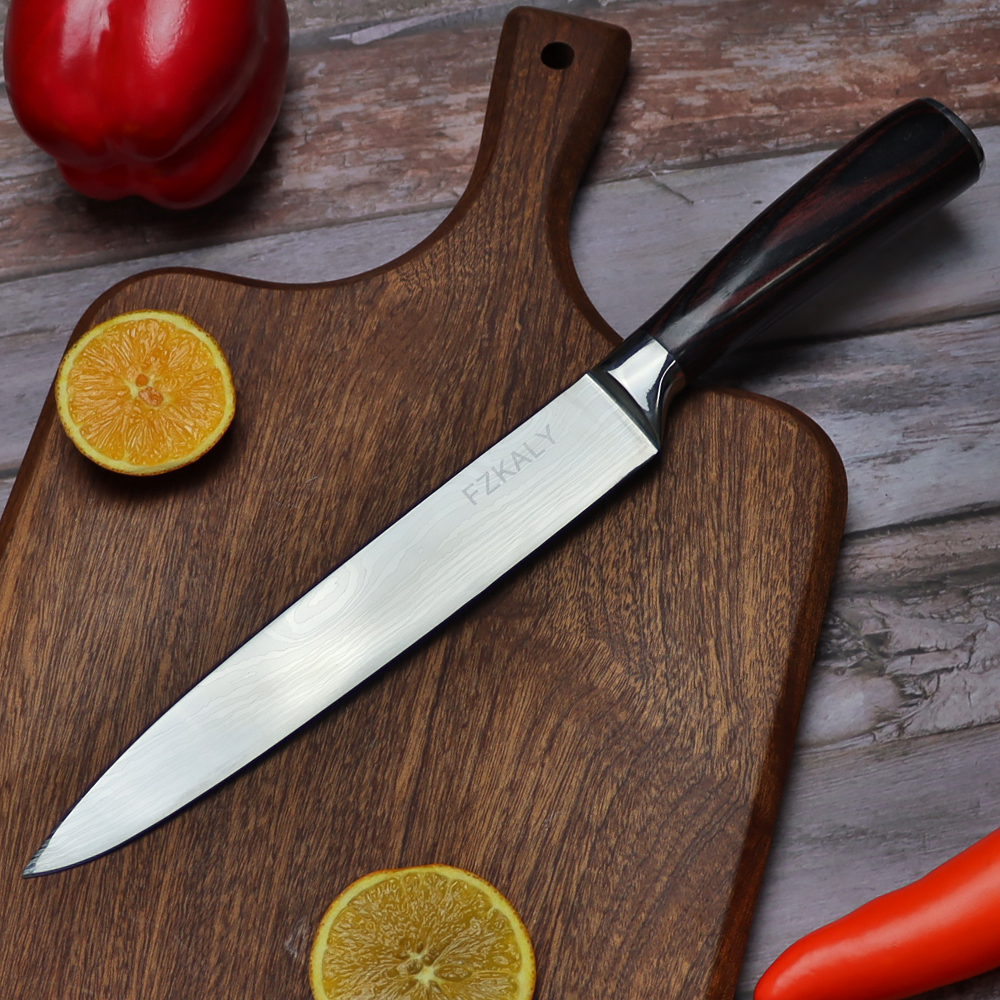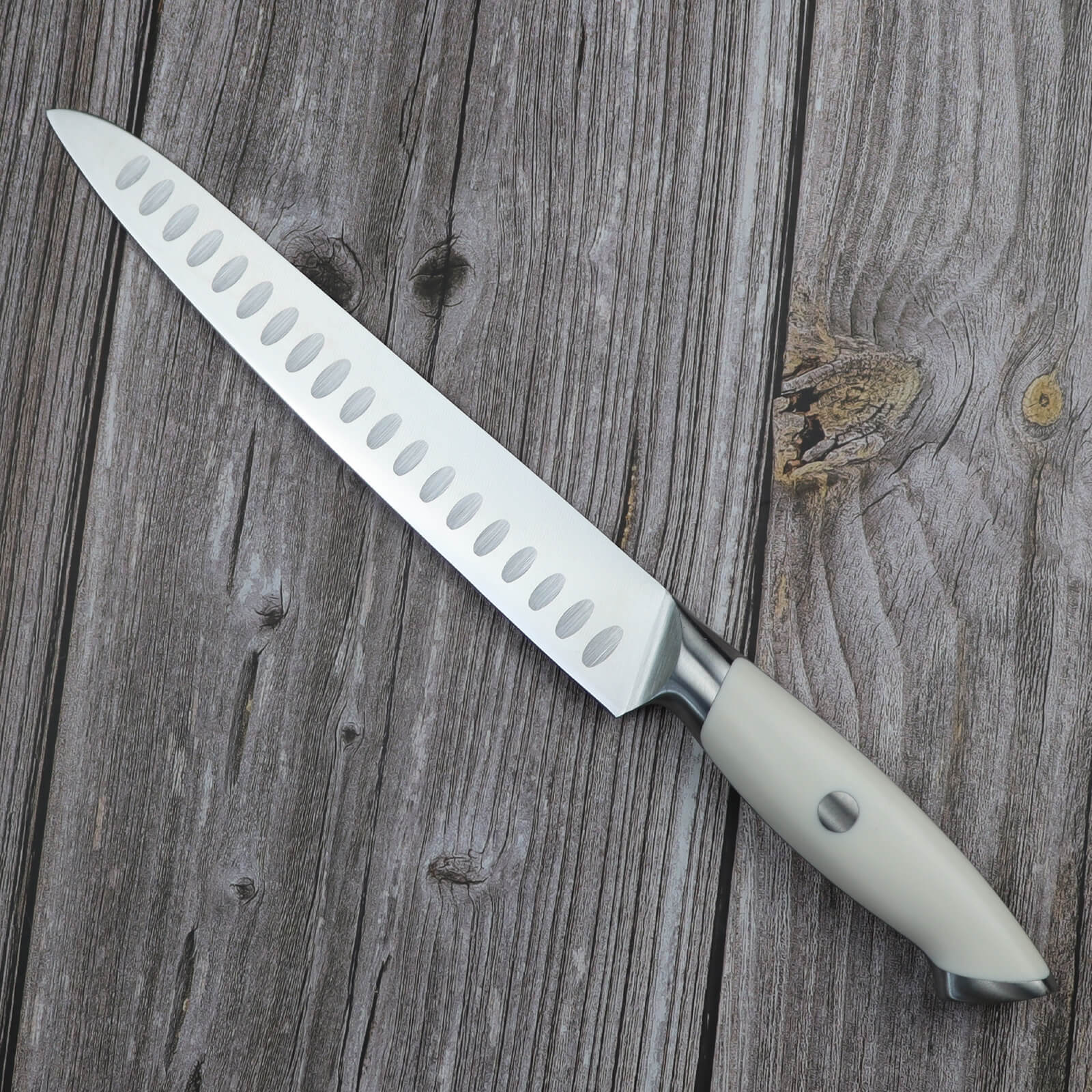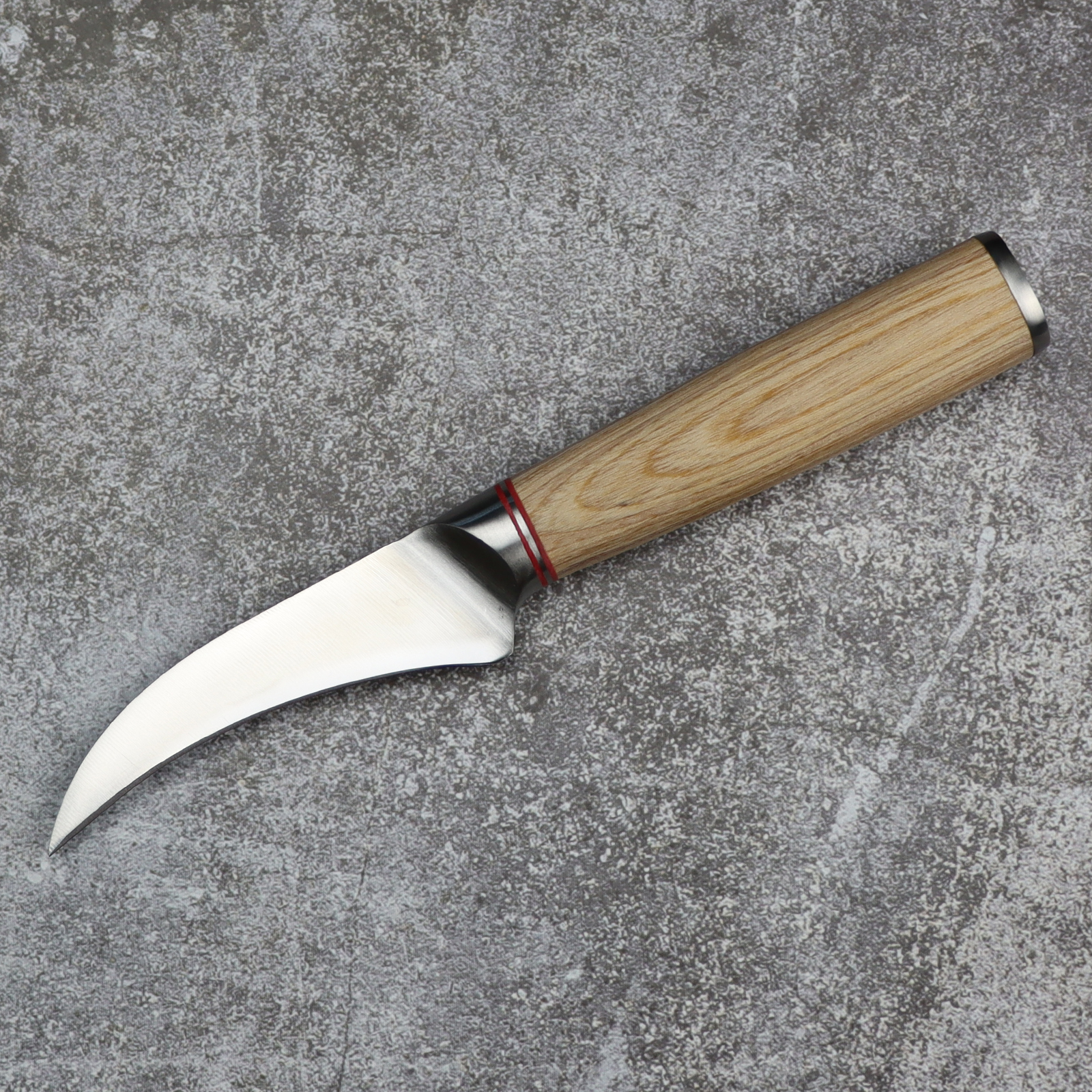Comparing Slicing Knife VS Carving Knife
Feb 24,2023 | Fzkaly
When it comes to slicing and carving meat, two knives that are often compared are the slicing knife and the carving knife. Both knives are designed to cut thin, even slices of meat, but there are some key differences that set them apart. Next, we will analyze the differences between a slicing knife and a carving knife to help you make an informed decision about which knife is right for you.
What is a Slicing Knife?
A slicing knife is a long, narrow knife with a straight edge that is designed to cut thin, even slices of meat. The blade is typically between 8 and 14 inches long and has a pointed tip that allows it to pierce through meat with ease. The blade is also flexible, which allows it to follow the contours of the meat as it is being sliced.

What is a Carving Knife?
A carving knife is a long, narrow knife with a curved edge that is designed to cut thin, even slices of meat. The blade is typically between 8 and 12 inches long and has a pointed tip that allows it to pierce through meat with ease. The blade is also rigid, which allows it to maintain its shape and provide precise cuts.

What is the Difference Between a Carving and Slicing Knife?
Blade Shape
One of the main differences between a carving knife and a slicing knife is the shape of the blade. Slicing knives have straight blades, while carving knives have curved blades. The curved blade of a carving knife allows for a rocking motion as it slices through meat, making it easier to maintain a consistent cutting angle and produce even slices. The straight blade of a slicing knife is designed for a more linear cutting motion.
Blade Length
The length of the blade is another key difference between a carving knife and a slicing knife.. Slicing knives typically have longer blades, ranging from 8 to 14 inches, while carving knives have shorter blades, typically between 8 and 12 inches. The longer blade of a slicing knife is designed to handle larger cuts of meat, while the shorter blade of a carving knife is better suited for smaller cuts.
Flexibility
Flexibility is another factor to consider when choosing between a carving knife and a slicing knife. Slicing knives have flexible blades that can bend and follow the contours of the meat as it is being sliced. This allows the blade to create thin, even slices of meat with minimal effort. On the other hand, carving knives have rigid blades that maintain their shape as they cut through the meat. This provides more control and precision when making cuts.
Purpose
Both slicing and carving knives are designed for the same purpose: to cut thin, even slices of meat. However, the type of meat being cut and the desired outcome will determine which knife is best for the job.
Design
Finally, the design of the handle should also be taken into consideration when choosing between a carving knife and a slicing knife. Carving knives typically have handles that are designed for a comfortable grip, with a curved shape that conforms to the hand. Slicing knives often have handles that are designed for a more secure grip, with textured surfaces and ergonomic shapes that prevent slipping.
Our Top Slicing Knife Picks
1. 8" Damascus Slicing Knife
Price: $85
Owning this Damascus slicing knife can meet your daily cutting needs such as fruits, vegetables, meats, chicken and fish, etc. It will save more prep time and brings more pleasure to cooking. This premium slicing knife is made of 67-layer high carbon steel, which undergoes Vacuum heat treatment for hardness and sharpness (62 HRC), ensuring long-lasting edge retention, rust resistance, and durability.
The Cladding technology creates a beautiful natural Damascus pattern with a hammered texture that not only adds to the aesthetics but also prevents food from the sticking to blade, making this slicing knife a must-have in any kitchen.
In addition, this 8" Damascus slicing knife comes with a leather sheath for safe storage, making it a great gift option.
2. 8" Flexible Slicing Knife
Price: $45
The 8-inch size is perfect for slicing and cutting turkey, brisket, BBQs, bread, larger fruits, and vegetables, making it easy to manipulate for different functions. Crafted from German X50CrMoV15 stainless steel with a 56-58 hardness, this slicing knife is rust-proof and durable, ensuring long-lasting use. The high chromium content enhances wear and corrosion resistance, so you can cut through food without worrying about the knife breaking.
The full-tang design ensures the blade extends far into the handle, providing a lifetime of safe and precise use. Your palm and wrist won't fatigue, even after prolonged use, due to the safe, comfortable grip.
The special waved pattern of the Fzkaly flexible slicing knife is strikingly elegant, like a Damascus knife. This design feature decreases food friction, making the vegetable cleaver easy to clean and maintain.
3. 9" Meat Carving Knife
Price: $49
The Fzkaly 9" meat carving knife is the perfect tool for achieving precision slices every time. This knife is forged from 7Cr17Mov high carbon stainless steel, ensuring excellent durability, rust, and stain resistance with a 57±2 Rockwell hardness rating.
The hand-sharpened edge at 14-16 degrees per side provides long-lasting sharpness retention, making it an ideal tool for professionals and home cooks alike.
The handle is made of ABS materials, making it sturdy and ergonomic for a comfortable grip during use. The riveted design of the handle enhances the knife's resilience, ensuring that it can handle any task you put it to. With its exceptional durability and precision, this meat carving knife is sure to become a favorite in your kitchen.
Conclusion
While both slicing and carving knives are designed for similar tasks, they have distinct differences that make them better suited for different types of meat and cutting techniques. By considering factors such as blade length, blade shape, flexibility, and design, you can choose the right knife for the job and achieve perfect slices every time. So, the next time you're faced with the question of whether to use a slicing knife or a carving knife, ask yourself: what type of meat am I cutting, and what kind of slices do I want to achieve? With the right knife in hand, the answer will be clear.






